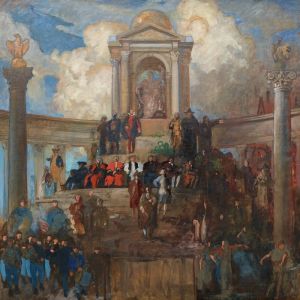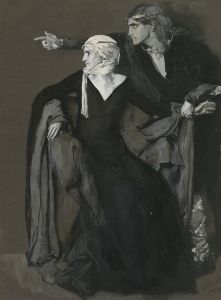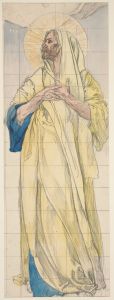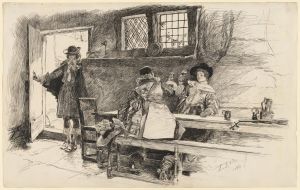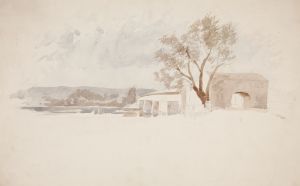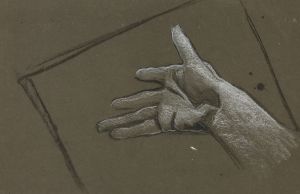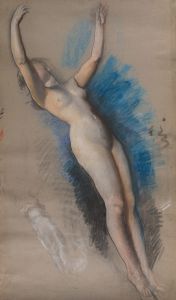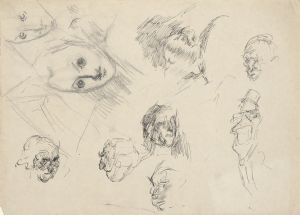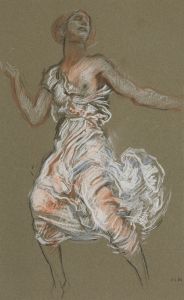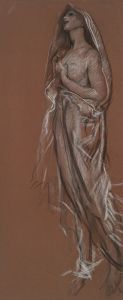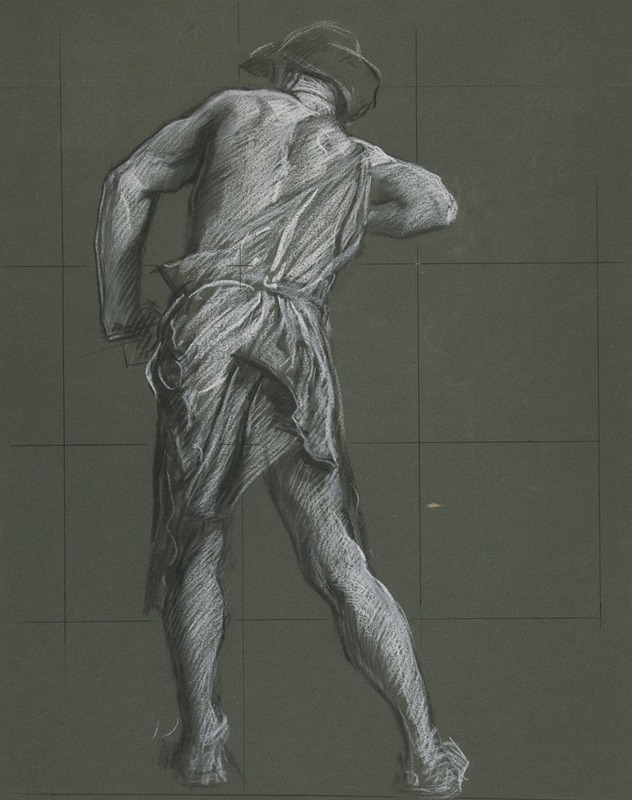
Figure study for ‘The Spirit of Vulcan, Genius of the Workers in Iron and Steel,’ lunette in the rotunda of the Pennsylvania State Capitol at Harrisburg
A hand-painted replica of Edwin Austin Abbey’s masterpiece Figure study for ‘The Spirit of Vulcan, Genius of the Workers in Iron and Steel,’ lunette in the rotunda of the Pennsylvania State Capitol at Harrisburg, meticulously crafted by professional artists to capture the true essence of the original. Each piece is created with museum-quality canvas and rare mineral pigments, carefully painted by experienced artists with delicate brushstrokes and rich, layered colors to perfectly recreate the texture of the original artwork. Unlike machine-printed reproductions, this hand-painted version brings the painting to life, infused with the artist’s emotions and skill in every stroke. Whether for personal collection or home decoration, it instantly elevates the artistic atmosphere of any space.
The "Figure study for ‘The Spirit of Vulcan, Genius of the Workers in Iron and Steel,’ lunette in the rotunda of the Pennsylvania State Capitol at Harrisburg" is a preparatory work by Edwin Austin Abbey, an American muralist and illustrator. Abbey was commissioned to create a series of murals for the Pennsylvania State Capitol in Harrisburg, a project that was part of a broader effort to adorn the building with significant artworks that celebrated the history and industry of Pennsylvania.
Edwin Austin Abbey (1852-1911) was a prominent artist known for his illustrations and murals. He was born in Philadelphia and trained at the Pennsylvania Academy of the Fine Arts. Abbey's career took him to England, where he became associated with the Pre-Raphaelite Brotherhood and gained acclaim for his historical and literary illustrations. His work on the Pennsylvania State Capitol murals is considered one of his most significant contributions to American art.
The lunette titled "The Spirit of Vulcan, Genius of the Workers in Iron and Steel" is one of several lunettes Abbey created for the Capitol's rotunda. The rotunda itself is a grand architectural space designed to be the symbolic heart of the Capitol, and the murals were intended to reflect the state's cultural and industrial achievements. Vulcan, the Roman god of fire and metalworking, is an apt symbol for Pennsylvania, a state known for its steel and iron industries.
The figure study for this lunette would have been a preparatory drawing or painting that Abbey used to plan the final composition. Such studies are crucial in the mural-making process, allowing the artist to experiment with poses, proportions, and the overall arrangement of figures before committing to the large-scale final work. These studies often provide insight into the artist's creative process and the development of the final mural.
In the context of the Pennsylvania State Capitol, Abbey's murals, including "The Spirit of Vulcan," serve to highlight the importance of industry and labor in the state's history. The depiction of Vulcan would have been intended to honor the workers in iron and steel, acknowledging their contributions to Pennsylvania's economic and industrial prowess.
Abbey's work on the Capitol murals was part of a larger movement in the late 19th and early 20th centuries to incorporate fine art into public buildings, a trend that aimed to elevate public spaces and inspire civic pride. The murals in the Pennsylvania State Capitol are a testament to this movement and remain an important part of the building's artistic heritage.
Overall, the "Figure study for ‘The Spirit of Vulcan, Genius of the Workers in Iron and Steel,’ lunette in the rotunda of the Pennsylvania State Capitol at Harrisburg" represents a significant step in the creation of one of Edwin Austin Abbey's major works, reflecting both his artistic skill and the broader cultural values of his time.






